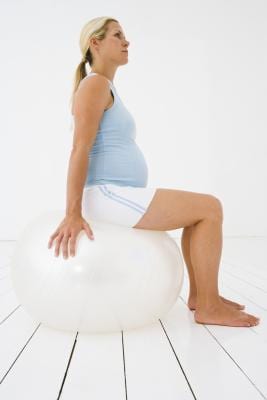Regular exercise during pregnancy keeps you healthier, helping to boost your energy levels and prepare the body for labor. But in some situations, exercise in pregnancy is dangerous. Women with high-risk pregnancies need to avoid strenuous activity, and all pregnant women should avoid any activities with the risk of falling. If you are unsure about the safety of an exercise, consult with your physician for more personalized advice.
Personal Background
Your personal medical situation and exercise experience level before you become pregnant affects the type of exercise that is safe during pregnancy. A woman with a high-risk pregnancy faces a greater risk of complications with exercise, particularly strenuous workouts. Consult with your personal physician to determine if your pregnancy is considered high-risk. Factors include previous premature babies, miscarriages, advanced maternal age, weight outside the normal range, existing health problems or being pregnant with multiples. If you are considered high risk, work with your doctor to determine if it is safe to continue your current fitness routine or start a modified workout program.
A realistic look at your fitness level also helps determine a safe pregnancy workout routine. If you didn’t exercise at all prior to getting pregnant, don’t jump right in with an intense workout. Starting slowly with low-impact exercises, such as swimming or walking, is a safer option for you and your baby.
Intensity
The intensity and impact level of an exercise helps determine how safe it is for a pregnant woman. High-intensity, high-impact workouts jar the bones, muscles and joints, causing stress and potential injury. According to Kids Health, high-impact exercises can put excess pressure on the uterus, possibly resulting in vaginal bleeding or premature labor. Horseback riding is an example of an exercise that involves jarring movements that can be dangerous during pregnancy. Running is also considered a high-impact activity. If you are already a runner, consult with your doctor to make sure it is safe for you to continue.
Contact
The degree of physical contact with other participants or equipment is another consideration. Activities like football, softball, hockey and tennis leave you open to potential injury to the abdomen, which puts your baby at risk. Contact sports often involve bumping into other players and high-intensity workouts, that can leave you injured while also putting your baby at risk for trauma. Avoid these types of activities throughout the pregnancy.
Falling Risk
Other exercises are unsafe due to the risk of falling or losing your balance. A fall could cause an injury to you or harm to your baby. Activities such as ice skating, roller blading, skiing and rock climbing are not recommended for pregnant women. Bike riding is probably safe during the beginning of your pregnancy, but as your belly grows, your balance could be thrown off. This increases the risk for falls and injury. An exercise bike is a safe alternative during your pregnancy. Prenatal yoga is generally a safe exercise option, but you should avoid exercises such as headstands and other moves that require exceptional balance, extreme stretchikng or upending your body. This is especially true if you aren’t used to doing those moves when not pregnant.
Oxygen Levels
Certain physical activities affect the oxygen levels in the body, which could cause problems for your baby. Scuba diving is an example of an activity that isn’t recommended during pregnancy because of the possible side effects of decompression as you return to the surface. Exercising at high altitudes might also cause problems in a pregnancy. If your own oxygen supply is lacking during the workout, the oxygen supply to your baby can also be limited. Avoid exercises that deprive or limit oxygen to the body to keep both you and your baby safe.





